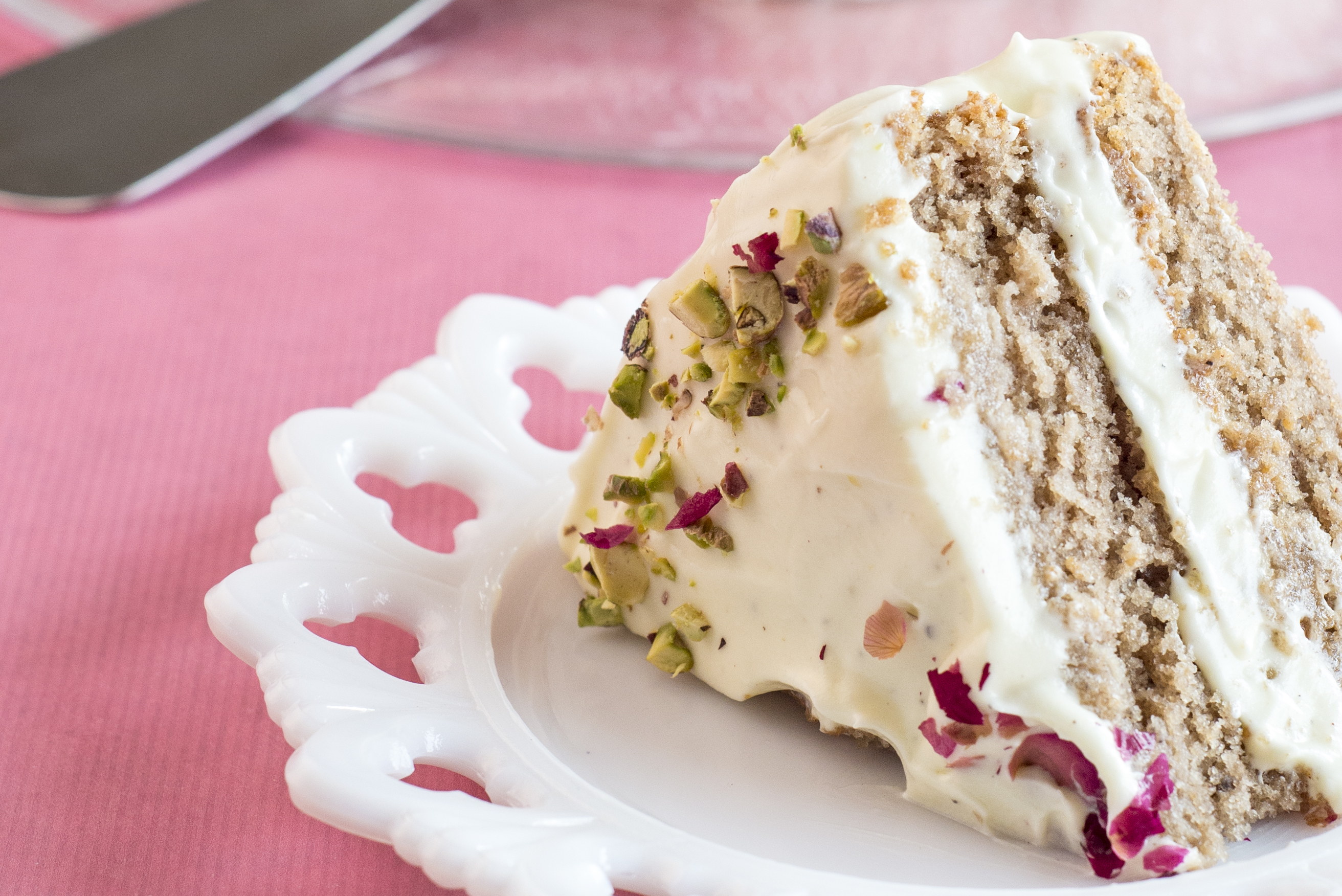
LONDON’S Brick Lane is famed for its curry houses, Bengali sweet shops and its street market.
Our new favourite recipe book, Brick Lane Cookbook by Dina Begum (Kitchen Press, £20), offers a fantastic selection of recipes inspired the area’s food scene.
This chai malai cake tastes as good as it looks. Decorate with dried rose petals and pistachios for the final touch.
You’ll need
2 tea bags
½ tsp ground cardamom
100ml whole milk
½ tsp distilled white vinegar
175g unsalted butter, at room temperature
200g caster sugar
1 tsp vanilla extract
1 tsp ground cinnamon
1 tsp ground ginger
2 tbsp Greek yoghurt
225g self-raising flour
1½ tsp baking powder
3 medium egg whites Frosting and decoration:
100g unsalted butter
½ tsp ground cardamom
180g full-fat cream cheese
½ tsp vanilla extract
2 tbsp rosewater
250g icing sugar
1 tbsp dried rose petals
1 tbsp crushed pistachios
Method
Preheat oven to 180C/160C fan/gas 4. Grease and line two cake tins.
Steep tea bags in 100ml boiling water, stirring for a minute to extract as much of the flavour as possible. Discard the teabags. Add the cardamom to the tea and stir thoroughly, then set aside to let it infuse.
Make your buttermilk. Pour milk into a glass and stir in vinegar. Let this sit while you start on the cake batter.
Cream together butter, sugar and vanilla with a handheld mixer until light and fluffy.
Add cinnamon, ginger and yoghurt and beat for a further minute. Slowly beat in tea and buttermilk.
Put flour in a separate bowl with baking powder and ¼ tsp of salt and quickly mix with a whisk. Add to the buttermilk mixture in 2 or 3 additions, then whisk for about 30 seconds until well combined. Don’t overmix or you’ll lose the lightness.
Put egg whites into a clean mixing bowl. Beat with a whisk until they form stiff peaks. Gently fold egg whites into the cake batter and pour it into the prepared tins. Bake for 25 to 30 minutes, or until a toothpick comes out clean. Cool in the tins on a wire rack.
For the frosting, beat butter with ground cardamom until pale and fluffy.
Mix in cream cheese, vanilla and rosewater. Add icing sugar and whisk together until you have a smooth, glossy frosting.
Put one of the cake layers on a plate. Spread with a third of the frosting, then turn the second cake layer upside-down and place on top, gently pressing together to sandwich.
Pile remaining frosting on top of the second layer. Gently cover the sides, turning as you go, and smooth the rest in a thick layer over the top.
Finish with two circles of vibrant pink dried rose petals and crushed pistachios and dot a couple of rose petals in the centre. The cake tastes best after a couple of hours in the fridge.

Enjoy the convenience of having The Sunday Post delivered as a digital ePaper straight to your smartphone, tablet or computer.
Subscribe for only £5.49 a month and enjoy all the benefits of the printed paper as a digital replica.
Subscribe